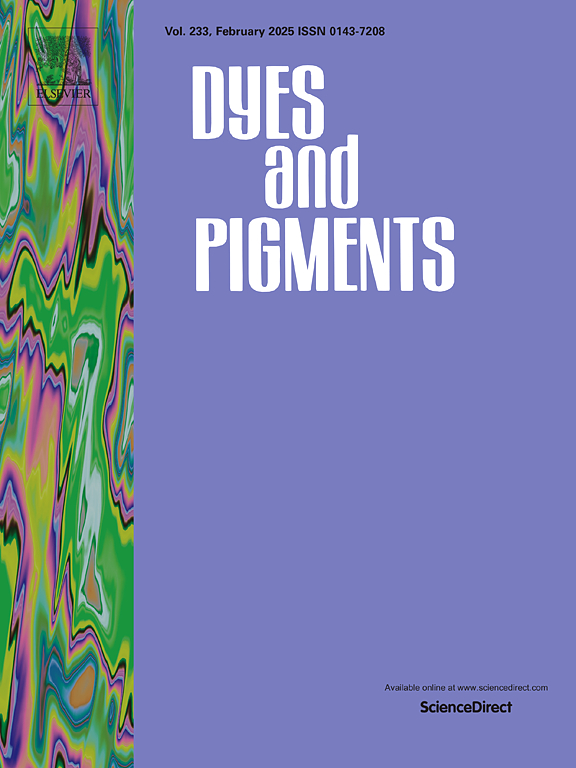光拉伸调制构建多种可激活的光功能染料
IF 4.1
3区 工程技术
Q2 CHEMISTRY, APPLIED
引用次数: 0
摘要
本文报道了一种基于苯恶嗪酮的荧光基团及其酰化衍生物。有趣的是,目前的荧光调制机制未能解释在这一系列染料中酰基化诱导的荧光激活。在详尽的理论计算和实验验证的支持下,我们提出了键光拉伸作为调节异常光物理性质的分子机制。具体来说,苯恶嗪酮- nh2的光激发诱导不对称氨基附近的CC键明显拉伸,通过非辐射跃迁淬灭激发态能量。然而,在酰化后,氮部分对荧光团HOMO和LUMO的贡献显著减少,从而导致基态和激发态之间的结构变化收缩,从而增强了辐射跃迁。本研究的荧光团支持我们构建具有可控光子热转化的多生物分子可激活光功能染料。本文章由计算机程序翻译,如有差异,请以英文原文为准。
Photo-stretching modulation to construct multiple activable photo-functional dyes
A Phenoxazinone based fluorophore and its acylated derivatives were reported in this work. Interestingly, the present fluorescence modulation mechanisms failed to explain the acylation induced fluorescence activation in this series of dyes. Supported by exhaustive theoretical calculation and experimental validation, we proposed the bond photo-stretching as a molecular mechanism that modulated the abnormal photophysical property. Specifically, photo excitation of Phenoxazinone-NH2 induced distinctly stretching of a C![]() C bond adjacent to the asymmetric amino group to quench the excited state energy via non-radiative transition. Upon acylation, however, the contribution of the nitrogen moiety to the HOMO and LUMO of the fluorophore reduced significantly which thus resulted a contraction of structural changes between the ground and excited states to enhance the radiative transition. The fluorophore in this work supports us to construct multiple biomolecules activable photo functional dyes with controllable photon to heat transformation.
C bond adjacent to the asymmetric amino group to quench the excited state energy via non-radiative transition. Upon acylation, however, the contribution of the nitrogen moiety to the HOMO and LUMO of the fluorophore reduced significantly which thus resulted a contraction of structural changes between the ground and excited states to enhance the radiative transition. The fluorophore in this work supports us to construct multiple biomolecules activable photo functional dyes with controllable photon to heat transformation.
求助全文
通过发布文献求助,成功后即可免费获取论文全文。
去求助
来源期刊

Dyes and Pigments
工程技术-材料科学:纺织
CiteScore
8.20
自引率
13.30%
发文量
933
审稿时长
33 days
期刊介绍:
Dyes and Pigments covers the scientific and technical aspects of the chemistry and physics of dyes, pigments and their intermediates. Emphasis is placed on the properties of the colouring matters themselves rather than on their applications or the system in which they may be applied.
Thus the journal accepts research and review papers on the synthesis of dyes, pigments and intermediates, their physical or chemical properties, e.g. spectroscopic, surface, solution or solid state characteristics, the physical aspects of their preparation, e.g. precipitation, nucleation and growth, crystal formation, liquid crystalline characteristics, their photochemical, ecological or biological properties and the relationship between colour and chemical constitution. However, papers are considered which deal with the more fundamental aspects of colourant application and of the interactions of colourants with substrates or media.
The journal will interest a wide variety of workers in a range of disciplines whose work involves dyes, pigments and their intermediates, and provides a platform for investigators with common interests but diverse fields of activity such as cosmetics, reprographics, dye and pigment synthesis, medical research, polymers, etc.
 求助内容:
求助内容: 应助结果提醒方式:
应助结果提醒方式:


